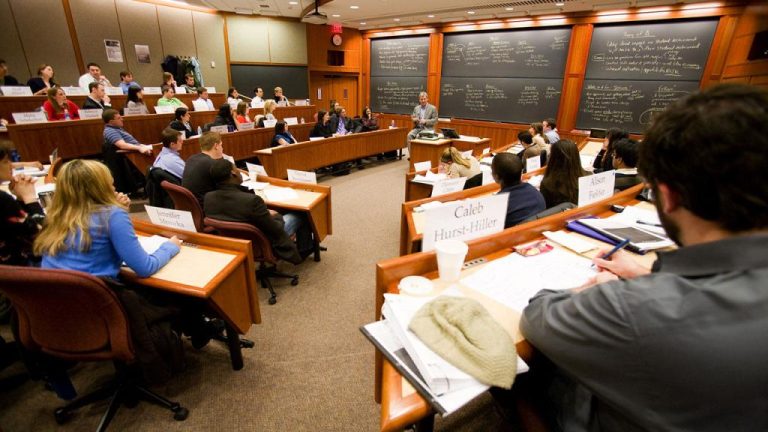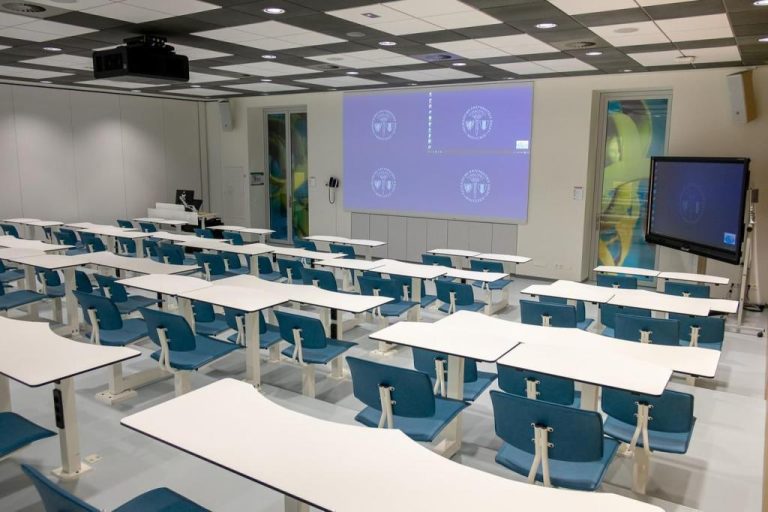For optimal diversity, fat people are obviously indispensable, Dap Hartmann argues. But how inclusive is a university where its furniture engages in fat-shaming?
(Photo: Sam Rentmeester)
This week, TU Delft is focusing on Diversity, Equity & Inclusion (DE&I). But what does DE&I actually stand for? Chief Diversity Officer David Keyson explains: “By respecting in a genuine and fair way the unique, authentic self, we can foster a high sense of belongingness and inclusion in our daily lives. This requires critical reflection on how we interact individually and as a group.” Right… I’m glad this is now clarified.
In this context, I want to draw attention to fat people. It seems that you are not allowed to say that anymore. Recently, the description of Augustus Gloop in Roald Dahl’s Charlie and the chocolate factory was changed from ‘fat’ to ‘enormous’. As I myself belong to the category of fat people, I think I have the right to say that this is not an improvement. ‘Fat’ is an unambiguous description. You can be short and fat. But how can you be short and enormous at the same time? Should the qualification ‘fat’ nevertheless be considered sensitive, you can always resort to the nuance that Obelix usually applied: ‘I’m not fat. I’m just well-covered.’
How humiliating is it for a well-covered student to have to ask for a separate chair?
For optimal diversity, fat people are obviously indispensable. But what about inclusivity? Generally, I have little to complain about that. I sit in the best chair ever made (in Dutch) and the elevator never moans that I’m overloading it. However, it is confrontational to read the number of people the elevator believes correspond to its maximum load capacity. To my great dismay there are lecture halls at TU Delft with furniture I do not fit in. This is because the chairs and tables are bolted to the floor, as though we are on a ship. The space between the edge of the table and the backrest of the chair is just 32 centimetres, and I simply do not fit in between. It is less space than in the economy class of an airplane. Although I do not attend lectures anymore, last week I happened to spend the whole day in such a torture chamber. A separate chair ultimately provided relief, but I couldn’t help thinking of ‘enormous’ or ‘well-covered’ students. How do they feel when TU Delft furniture doesn’t allow them access? How inclusive is a university where its furniture engages in fat-shaming? How humiliating is it for a well-covered student to have to ask for a separate chair?
In the past, I have expressed my views (in Dutch) on the ideal lecture hall and voiced my dissatisfaction (in Dutch) that TU Delft does not follow suit. The stubbornness in conducting experiments with weird lecture halls never ceases to surprise and, above all, irritate me.

(Photo: Harvard Business School)
The above photo shows a lecture hall at the Harvard Business School. Students sit in comfortable, swivel, height-adjustable, and movable chairs. So which sadist preferred the Abu Ghraib style furniture in the Beijerinck Hall, Waterman Hall, Franklin Hall, Korvezee Hall, and Wim Crouwel Hall? Should we praise TU Delft for its inclusivity of well-covered students? Fat chance.

Furniture in the Beijerinck Hall at TU Delft. (Photo: TU Delft)
Dap Hartmann is Associate Professor of Innovation and Entrepreneurship at the Delft Centre for Entrepreneurship (DCE) at the Faculty of Technology, Policy and Management. In a previous life, he was an astronomer and worked at the Harvard-Smithsonian Center for Astrophysics. Together with conductor and composer Reinbert de Leeuw, he wrote a book about modern (classical) music.


![[Column] Fat Shaming](https://delta.tudelft.nl/wp-content/uploads/2023/12/DapHartmann_4623_WEB_0.jpg)
Comments are closed.